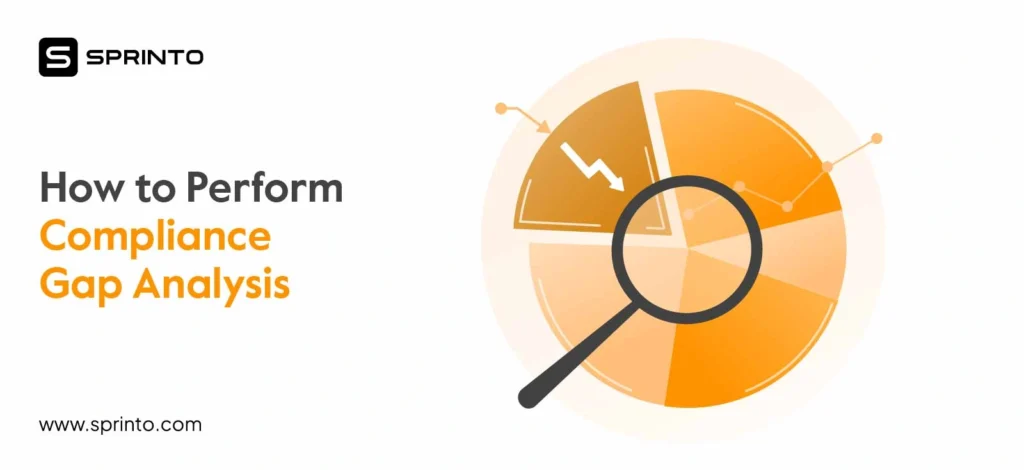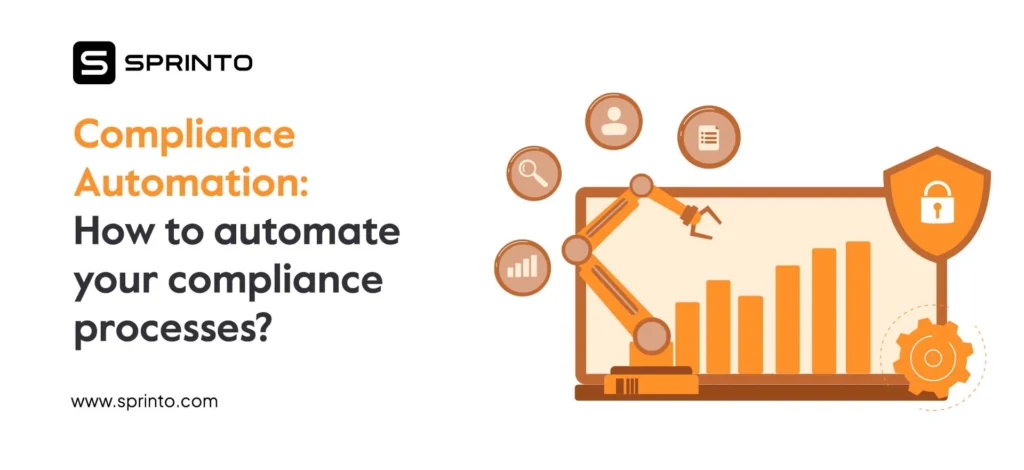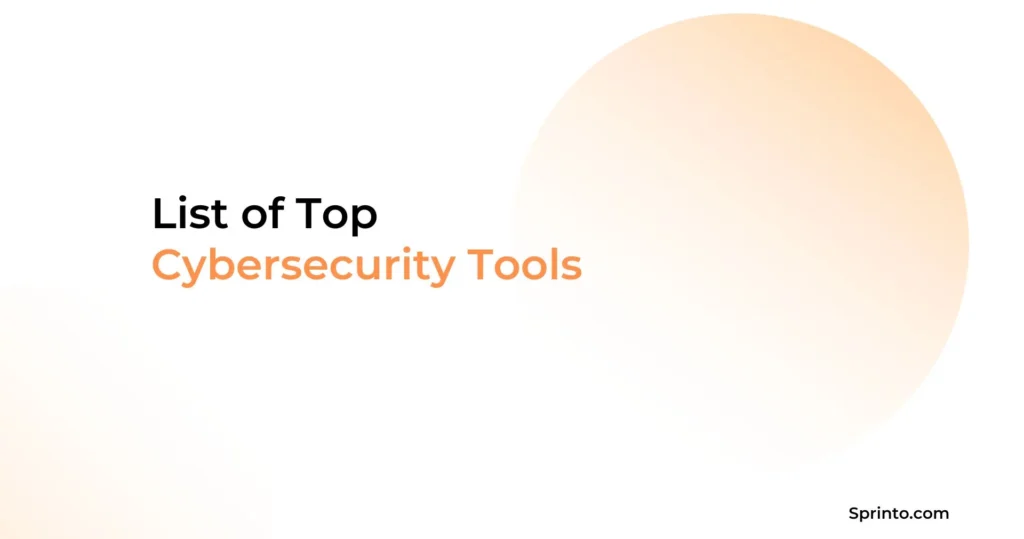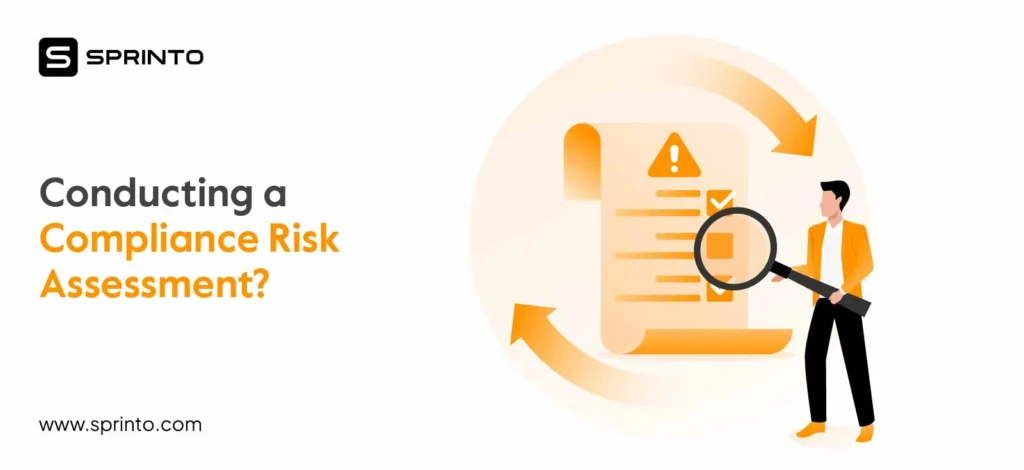FedRAMP is the U.S. government’s program for vetting cloud services. Established in 2011 by an OMB memo, it uses a consistent, NIST-based framework so agencies can trust and reuse one authorization rather than run separate security reviews for every provider.
Today, over 180 cloud products hold FedRAMP authorization, and agencies have reused those security packages more than 1,500 times—cutting redundant audits and speeding up procurement. For any cloud provider working with federal data, FedRAMP compliance is a mandatory first step to winning and maintaining contracts.
In this article, you’ll learn exactly what FedRAMP compliance involves, how it compares to other frameworks, the paths to authorization, and practical ways to streamline the process so your team stays audit-ready without getting buried in paperwork.
What is FedRAMP compliance?
FedRAMP, or the Federal Risk and Authorization Management Program, is a U.S. government-wide initiative that standardizes the security assessment, authorization, and continuous monitoring of cloud products and services used by federal agencies.
As of June 2025, the program has:
- Authorized more than 400 cloud offerings in total, with 104 new authorizations just this fiscal year
- Granted 44 “FedRAMP Ready” designations indicating successful readiness assessments
- Listed multiple systems “In Process,” all moving toward full authorization
Why is FedRAMP compliance important?
FedRAMP compliance is important because it ensures Cloud Service Providers (CSPs) meet rigorous federal security standards, enabling them to work with U.S. government agencies. It builds trust through standardized risk assessments, protects sensitive data, and opens doors to lucrative federal contracts by listing authorized vendors in the FedRAMP Marketplace.
Here’s why CSPs should consider getting FedRAMP compliant:
- Avoids repeat assessments: Since FedRAMP began, agencies have reused existing authorizations hundreds of times across more than 300 offerings, cutting out redundant audits and accelerating time to contract.
- Demonstrates rigorous security: FedRAMP builds on over 400 controls drawn from NIST SP 800-53. Meeting these requirements shows agencies that your systems adhere to the same vetted security baseline used across government.
- Stands out in a crowded field: The FedRAMP Marketplace lists 414 fully authorized cloud products, and over 30 percent of those offerings come from small businesses. Holding an active authorization highlights your mature security posture to both federal and commercial customers.
- Aligns with federal IT strategy: The U.S. government spends more than $100 billion annually on IT and cybersecurity. FedRAMP’s “assess once, use many” model supports OMB’s cloud-first and zero-trust mandates by driving consistency, continuous monitoring, and reduced duplication across agencies.
Achieving FedRAMP compliance is more than a contractual requirement. It creates a repeatable, transparent pathway for agencies to adopt your cloud services, helping you win federal business faster while reinforcing confidence in your security practices.
Manage FedRAMP compliance quick and easy with Sprinto
FedRAMP compliance versus other security standards
FedRAMP should be compared to other security standards, such as NIST and FISMA, to understand if the choice you make is right or not. Here are the salient differences between FedRAMP and other frameworks like ISO 27001, SOC 2, and NIST RMF.
| Aspect | FedRAMP | ISO 27001 | SOC 2 | NIST RMF |
| Who Leads | Sponsoring agency’s Authorizing Official or JAB | Accredited certification bodies | Independent CPA firms | Each agency’s Authorizing Official |
| Primary Audience | Federal agencies | Organizations across industries | Private-sector customers | Federal agencies and their contractors |
| Assessment Partner | Accredited Third-Party Assessment Organization (3PAO) | Certification bodies | Independent CPA firms | Agency-designated assessors |
| Typical Timeline | 6–9 months (Agency path); 9–12+ months (JAB path) | ~1 year per cycle, with mid-cycle surveillance | Type I: point in time; Type II: 6–12 months | Agency-defined, often annual |
| Cost Profile | $250 K–$3 M+ initial; $100 K–$1 M+ annual, by impact level | Varies by organization size and scope | Moderate, depending on report type | Varies by agency policies and scope |
| Reuse Scope | “Authorize once, use many” government-wide via Marketplace | Certificate reused but clients may audit | Report shared but each client may review again | Internal reuse only within each agency |
| Review Rigor | Strict, based on Low/Moderate/ High baselines | Focused on ISMS continual improvement | Flexible criteria selection | Agency-specific RMF steps and frequencies |
How FedRAMP fits into your existing compliance ecosystem
Most companies already have a framework for security—policies under ISO 27001, control tests through SOC 2 audits, and risk assessments driven by NIST RMF. Introducing FedRAMP simply means adjusting your controls and workflows so they serve both federal and commercial requirements without starting from scratch.
Why FedRAMP feels familiar
Most core artifacts, risk registers, incident response plans, access control lists, and change management logs already align with FedRAMP’s control catalog. Teams that build on an ISO 27001 Information Security Management System often discover that as much as 25 percent of the FedRAMP documentation is already completed. Likewise, evidence gathered during SOC 2 Type II assessments (vulnerability scans, control testing reports, executive sign-offs) can populate your FedRAMP readiness package.
Practical steps for seamless integration
- Unified control mapping: Create a single matrix that links each FedRAMP control to its corresponding ISO Annex A or SOC 2 criteria. Adjust testing depth according to Low, Moderate, or High impact levels.
- Shared policy library: House all your security policies—incident response, access management, and change control in one repository. Auditors looking for ISO evidence or FedRAMP continuous monitoring reports will find the same source.
- Streamlined evidence workflow: Automate data collection from your security tools. Log exports, scan results, control attestations, and feed them directly into your compliance platform.
- Aligned monitoring practices: Incorporate FedRAMP’s reporting requirements into your existing monitoring cadence. You should also conduct monthly status updates and annual reassessments.
By overlaying FedRAMP requirements onto your current compliance activities, you eliminate redundancy and ensure every audit question has an answerable response from a single set of records. Your team no longer juggles separate projects; instead, one continuous process satisfies all stakeholders.
Sprinto makes control alignment effortless by linking your existing ISO, SOC 2 and NIST RMF artifacts directly to FedRAMP requirements. This is done using common control mapping to help minimize effort-duplication and get you audit-ready across multiple frameworks fast.
Benefits of FedRAMP compliance
FedRAMP compliance offers key benefits such as increased trust, access to federal contracts, and a standardized approach to cloud security. It streamlines the authorization process, reduces redundant assessments, enhances data protection, and boosts market credibility with both government and enterprise customers.
Here’s what you gain:
Eliminated audit redundancy
Once you earn an Authority to Operate, your security package appears in the FedRAMP Marketplace alongside 414 fully authorized cloud products, 79 systems in process, and 51 “FedRAMP Ready” designations. Any agency can review and adopt your package without having to create a new assessment, thereby sparing your team and federal buyers weeks of duplicated work.
Shorter procurement cycles
By reusing existing authorizations, agencies report cutting average procurement timelines by roughly three months, and you bypass costly re-audits and legal reviews. That speed to contract translates directly into faster revenue recognition and a competitive edge when deadlines are tight.
Comprehensive security baseline
FedRAMP builds on over 400 controls sourced from NIST SP 800-53, aligned into Low, Moderate, and High Impact baselines. Meeting these controls means your system withstands the same rigorous scrutiny applied across all federal information systems, your engineering and operations teams can trust that no critical safeguards are overlooked.
Continuous visibility and improvement
Monthly status reports, real-time alerting, and annual reassessments create a feedback loop that keeps your security posture current. Rather than scrambling for evidence when an audit looms, your team embeds monitoring into daily workflows, surfacing issues early and reducing the need for firefighting.
Market differentiation
Holding FedRAMP authorization shows both government and enterprise buyers that your security meets rigorous federal standards, making it easier to win contracts in highly regulated markets.
Key FedRAMP challenges and strategic solutions
Teams often clear early FedRAMP for SaaS obstacles only to encounter three recurring bottlenecks that stall progress and strain resources.
1. Coordinating 3PAO Assessments
Finding available Third-Party Assessment Organizations (3PAOs) can be a race against time. Each assessor must complete 24 hours of FedRAMP-specific training every year, which limits the pool of qualified auditors and leads to booking delays . Without enough trained assessors, you risk waiting weeks or even months for a slot.
How to Address It
- Engage at least two accredited 3PAOs early in your project plan.
- Secure assessment dates far in advance and include buffer weeks for assessor training schedules.
- Maintain an open line with your 3PAO contacts so you can pivot quickly if your primary assessor becomes unavailable.
2. Extended Authorization Timelines
Even with complete documentation, the average FedRAMP journey spans 12 to 18 months from kick-off through final Authority to Operate . Agency reviews alone can add several weeks after 3PAO testing, and JAB-path projects often push beyond 18 months due to deeper scrutiny at Moderate or High baselines.
How to Address It
- Break your project into sprints: finish readiness reviews, remediate findings, and submit interim artifacts in parallel to agency review cycles.
- Request preliminary agency feedback on smaller deliverables to catch issues early.
- Factor in holiday schedules, fiscal year freezes and agency staffing changes when building your timeline.
3. Sustaining Continuous Monitoring
Maintaining your Authority to Operate means monthly status reports, Plan of Action & Milestones updates, and annual reassessments. Without automation, these tasks pile up—logs must be exported, scans rerun, and evidence manually uploaded—turning compliance into a drain on engineering and security operations.
How to Address It
- Automate log exports, vulnerability scan results and configuration snapshots to feed directly into your compliance dashboard.
- Schedule recurring jobs for monthly reporting and set alerts for overdue items in your Plan of Action & Milestones.
- Integrate continuous monitoring into your security operations center workflows so evidence collection occurs alongside daily incident response and threat hunting.
Focusing on these three areas—3PAO coordination, project pacing, and automated monitoring—lets you push past common delays and keep your FedRAMP compliance effort on track.
FedRAMP compliance checklist
Your FedRAMP package begins with a System Security Plan and Security Assessment Plan that map each NIST control to your actual architecture and test procedures. An accredited 3PAO then delivers a Security Assessment Report, whose findings populate a living Plan of Action and Milestones, updated monthly.
Bundle those artifacts (including your Security Control Traceability Matrix and incident response plan) in FedRAMP Rev 5 templates to minimize the need for formatting back-and-forth. Confirm your FIPS 199 impact level, lock in 3PAO dates, and automate evidence exports into your compliance dashboard for real-time monitoring.
Finally, choose between an agency-sponsored ATO or a JAB provisional ATO for broad reuse.Use a FedRAMP compliance checklist to ensure proper understanding and implementation.
FedRAMP Authorization Process: Agency Path vs Joint Authorization Board Path
FedRAMP authorization offers two distinct routes, each tailored to different goals and stakeholders. Your choice affects timelines, costs, and the scope of reuse across federal agencies.
Key considerations when selecting your path:
1. Agency Path
- Faster feedback loops and lower initial costs: You work directly with one sponsoring agency, so all document reviews, clarifications and policy discussions happen within a single organizational context. This focused approach often cuts review cycles by weeks and lets you negotiate 3PAO and legal fees directly with the agency for more predictable budgeting.
- Ideal if you have a clear agency sponsor ready to champion your ATO: A committed Authorizing Official can fast-track your package, providing early guidance on control interpretations and prioritizing your 3PAO testing windows. Their internal advocacy reduces rounds of follow-up questions and aligns your team with agency-specific expectations.
- Subsequent agencies may still perform supplemental reviews: Even after your ATO appears in the FedRAMP Marketplace, other agencies can request targeted evidence or conduct light control checks to meet their unique mission needs. Keeping your documentation and evidence repositories current ensures you can respond quickly to these follow-on inquiries.
2. JAB Path
- Provisional ATO visible to all federal buyers: A Joint Authorization Board–issued P-ATO is published government-wide, enabling any agency to skip individual sponsorship and move directly to procurement. This broad visibility maximizes your solution’s reach with minimal additional authorization work.
- Suited for CSPs targeting multiple agencies and large-scale deployments: If you aim to serve diverse federal customers or support multi-agency integrators, the JAB path centralizes your authorization effort. By aligning with the security standards of FedRAMP PMO, GSA and DoD, you demonstrate enterprise-grade posture that resonates across the federal landscape.
- Requires deeper scrutiny and coordination with multiple stakeholders: JAB reviews involve technical and legal teams from three federal bodies, often requiring extensive workshops, working sessions and cross-agency impact analyses. You’ll need comprehensive documentation, dedicated liaisons and buffer time for back-and-forth discussions.
Choose the Agency Path to move quickly with a single sponsor, or opt for the JAB Path if you need a government-wide stamp of approval. Both routes demand rigorous documentation, early 3PAO engagement, and an automated evidence workflow to stay on schedule.
Key steps for achieving FedRAMP compliance
Choosing a clear, phased approach helps your team stay focused and measure progress against concrete milestones.
Below are four core phases, each introduced with a brief overview before the specific actions.
1. Plan
Laying the groundwork ensures that you have executive buy-in, defined scope and the right technology in place before any work begins. This phase aligns stakeholders and tools around the compliance goal.
- Secure leadership support by framing FedRAMP as a growth driver for federal business.
- Draw clear system boundaries to prevent scope drift—include every cloud resource, data store and entry point in your diagram.
- Select a compliance platform with native connectors to your cloud provider and built-in workflows for evidence capture.
2. Prepare
Translating policies into concrete artifacts and automating evidence collection reduces manual effort and risk of error. This step builds the documentation and toolchain your auditors will rely on.
- Map each control in your chosen baseline to existing FedRAMP tools: identity providers, SIEM, configuration management and document any gaps.
- Automate exports for logs, vulnerability scan outputs and configuration snapshots so evidence is collected without manual effort.
- Draft your System Security Plan and Security Assessment Plan around real configurations rather than theoretical policies.
3. Assess
A thorough internal review and early engagement with your assessor surface issues before the formal audit. This rehearsal phase lets you remediate gaps and refine documentation.
- Run an internal readiness review as a dress rehearsal, logging gaps in your Plan of Action & Milestones and assigning owners with deadlines.
- Share documentation and early evidence feeds with your chosen 3PAO; incorporate their feedback on format and depth before the formal audit.
- Address critical findings immediately, apply patches, update configurations and refine process steps to close gaps.
4. Operate
Embedding continuous monitoring and structured reporting into daily workflows ensures you maintain your Authority to Operate and react swiftly to new issues.
- Submit your Final Authorization Package using FedRAMP’s official templates and schedule working sessions with reviewers to resolve questions quickly.
- Automate monthly status reports and evidence uploads into your compliance dashboard to maintain visibility and reduce manual work.
- Treat each monitoring cycle as a chance to tune controls, refine runbooks, and tighten your security posture before the next reassessment.
By organizing your effort into these four stages with automation, you transform FedRAMP compliance from a one-off hurdle into a scalable, repeatable program.
FedRAMP certification cost
FedRAMP authorization carries a significant consideration in both expenditure and time and is shaped by your chosen impact level and preparedness.
Cost estimates by Impact Level
1. Low impact systems
- Initial authorization: $250 000 to $500 000
- Annual continuous monitoring: $100 000 to $200 000
2. Moderate impact systems
- Initial authorization: $500 000 to $1 500 000
- Annual continuous monitoring: $200 000 to $500 000
3. High impact systems
- Initial authorization: $1 000 000 to $3 000 000+
- Annual continuous monitoring: $500 000 to $1 000 000
4. Overall averages
- Typical total cost: around $1 000 000, with projects ranging from $150 000 to over $2 000 000 depending on scope and complexity.
FedRAMP certification expected timeline
- Fast-track cases: Six to nine months when a sponsoring agency is highly engaged and documentation is mature.
- Average pace: A year to 18 months from kickoff through final Authority to Operate, including readiness assessment, remediation, and agency or JAB review.
- Extended projects: Upto 24 months for high-impact systems requiring custom engineering, multiple review cycles, or complex integrations.
Accurate budgeting and realistic scheduling are critical. Building in contingency for unexpected findings, assessor availability, and agency feedback ensures your team avoids rushed work and maintains control over both cost and timeline.
Consequences of non-compliance with FedRAMP requirements
Failing to maintain FedRAMP compliance effectively locks you out of the federal cloud market. Federal agencies are required to use only FedRAMP-authorized or equivalent cloud services, so non-compliant providers face immediate contract ineligibility and potential termination of existing agreements.
Key repercussions include:
- Loss of authorization: Revocation of your Authority to Operate removes your listing from the FedRAMP Marketplace and bars you from offering services to any federal agency.
- Contract termination and revenue impact: Agencies can cancel or refuse to renew contracts with non-authorized CSPs, putting significant revenue streams at risk.
- Legal and financial liability: Using or marketing non-compliant cloud services may trigger enforcement under the False Claims Act, leading to steep penalties and damages.
- Heightened audit scrutiny: Once flagged for non-compliance, you’ll face more frequent and in-depth reviews from both FedRAMP PMO and agency auditors, driving up assessment costs.
- Reputational damage: Security gaps exposed by non-compliance undermine customer trust—public sector and commercial alike and can slow future sales cycles.
- Increased security risk: Skipping mandatory controls leaves systems vulnerable to breaches, data loss, or operational disruption, with potential downstream impacts on citizen services and agency missions.
Non-compliance is more than a procedural failure. It disrupts business operations, exposes you to legal risk and erodes the hard-won confidence of federal customers. Ensuring continuous adherence to FedRAMP requirements safeguards both your market access and your organization’s reputation.
Accelerate FedRAMP compliance with Sprinto
Sprinto turns manual busywork into automated workflows so your team focuses on security rather than paperwork. By embedding compliance tasks into your existing operations, Sprinto cuts authorization timelines and keeps you audit-ready at every step.
Key ways Sprinto drives faster FedRAMP compliance:
- AI-Powered Control Mapping: Instantly link your cloud configuration and policies to the 400+ NIST SP 800-53 controls in the FedRAMP compliance process. Sprinto’s built-in controls library adapts automatically to Low, Moderate or High baselines, eliminating weeks of manual cross-references.
- Automated evidence collection: Continuous monitoring becomes a byproduct of your routine operations. Logs, vulnerability scans, and configuration snapshots flow into Sprinto’s evidence repository in real time. No more hunting for files when the 3PAO calls.
- Live compliance dashboard: Track your FedRAMP authorization timeline at a glance. Dashboards show control health, open findings and remediation progress. With 50 percent less coordination time reported by our customers, you’ll know exactly what needs attention without digging through spreadsheets.
- Guided authorization workflows: Sprinto’s step-by-step playbooks walk you through the FedRAMP audit, from readiness assessment to Authority to Operate. Role-based tasks assign owners, deadlines, and automated reminders so nothing slips through the cracks.
- Built-in continuous monitoring: Schedule monthly status reports and annual reassessments with a click. Sprinto notifies you of expired certificates, failed tests and overdue POA&M items, keeping your FedRAMP continuous monitoring program on track year-round.
- Proven results: Four out of five CISOs report higher confidence in audit readiness when using Sprinto’s platform. Automated workflows reduce manual effort, accelerate the FedRAMP authorization process and free your security team to focus on risk management rather than document wrangling.
With Sprinto, FedRAMP authorization no longer feels like a one-time scramble. Automation makes compliance a continuous, manageable practice, so you achieve and maintain FedRAMP authorization sooner and with less friction.
Ready to take the first step? Speak to our experts today.
FAQs
1. How do you maintain FedRAMP compliance?
Maintaining FedRAMP compliance means embedding monthly and annual requirements into your operations. Authorized CSPs must submit monthly status reports, update their Plan of Action & Milestones, and perform annual control assessments on all critical, changed, and roughly one-third of remaining controls. Automating log exports, vulnerability scans, and configuration attestations ensures evidence is ready on demand and reduces manual effort.
2. What is the difference between FedRAMP compliance and SOC 2?
FedRAMP compliance is a mandatory government framework built on NIST SP 800-53 controls and required for any cloud service handling federal data. SOC 2 is an AICPA attestation against Trust Services Criteria (security, availability, etc.) tailored to private-sector customer demands . FedRAMP demands full coverage of its impact-level baseline with continuous monitoring and agency or JAB endorsement, whereas SOC 2 allows selective criteria and issues a Type I or Type II report without government reuse guarantees.
3. How long does it take to get FedRAMP authorized?
On average, the full FedRAMP authorization process takes 12 to 18 months from kick-off to ATO, although exceptionally well-prepared CSPs with an engaged agency sponsor can finish in 6 to 9 months. High-impact systems or those seeking a JAB P-ATO often fall toward the upper end of that range or beyond.
4. What is the difference between “FedRAMP Ready,” “In Process,” and “Authorized”?
- FedRAMP Ready: Your Readiness Assessment Report has been reviewed and approved by the FedRAMP PMO, signaling a high likelihood of successful authorization.
- FedRAMP In Process: You are actively working toward authorization—your package is under formal review by an agency or the JAB.
- FedRAMP Authorized: You have an active Authority to Operate, and your package is listed in the FedRAMP Marketplace for government-wide reuse.
5. Who needs FedRAMP compliance?
If you aim to sell cloud services to any federal agency or to companies that supply those agencies FedRAMP compliance is non-negotiable. Whether you’re a lean startup or a multinational provider, you join a community where over 30 percent of authorized solutions come from small businesses. Without that green light, your team can’t even bid for federal work, let alone keep existing contracts in good standing.
Payal Wadhwa
Payal is your friendly neighborhood compliance whiz who is also ISC2 certified! She turns perplexing compliance lingo into actionable advice about keeping your digital business safe and savvy. When she isn’t saving virtual worlds, she’s penning down poetic musings or lighting up local open mics. Cyber savvy by day, poet by night!
Explore more
research & insights curated to help you earn a seat at the table.


















